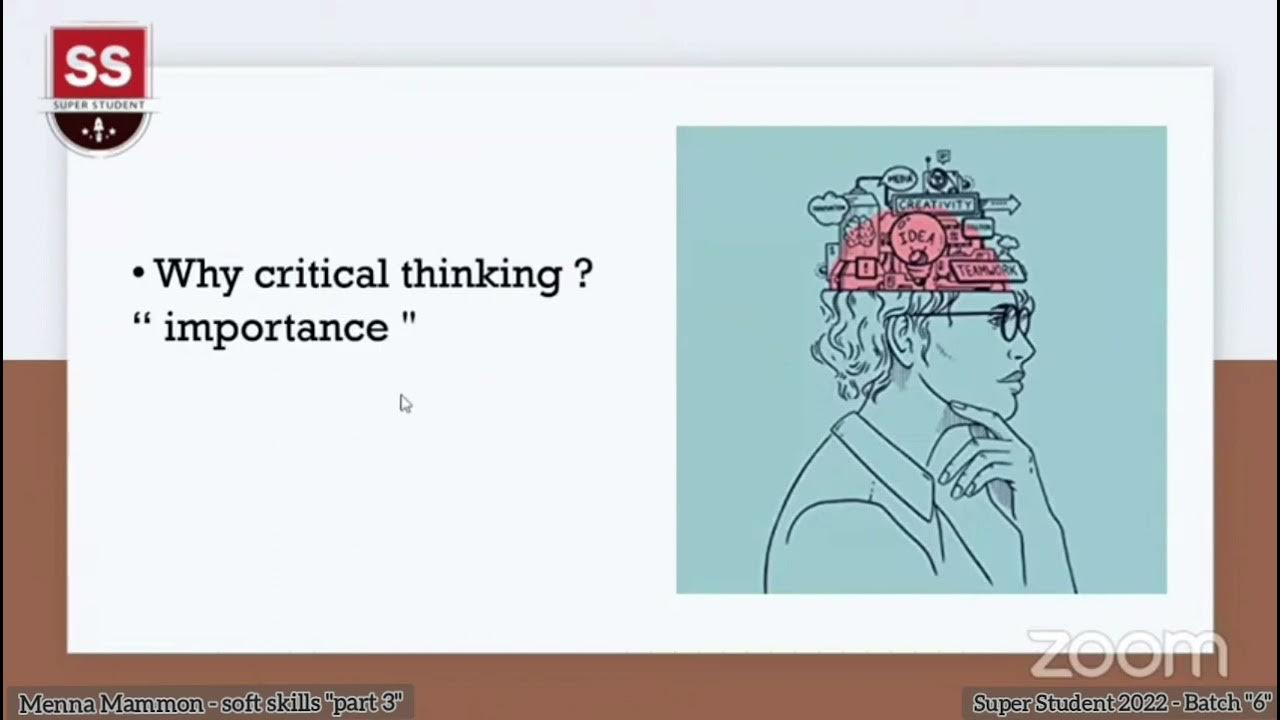So You Wanna Make Games?? | Episode 2: Concept Art
Summary
TLDRThis script offers an insightful look into the role of a concept artist, emphasizing that their job is not just about creating beautiful art but solving visual problems for projects like game development. It highlights the importance of setting constraints, conducting research, and building a moodboard to guide the creative process. The script also discusses the iterative nature of concept art, encouraging artists to embrace change, seek specific feedback, and present their work confidently. The key takeaway is that concept art is a collaborative and problem-solving endeavor that requires adaptability and effective communication.
Takeaways
- 🎨 Concept art is not just about creating beautiful, detailed drawings, but about solving visual problems and communicating ideas effectively.
- 🛠️ The role of a concept artist is to help teams by designing visual solutions; drawing and painting are tools for this communication.
- 🔍 Constraints are essential for a concept artist to focus and prevent aimless exploration, guiding the creative process towards the project's goals.
- 🎯 Understanding the problem and establishing constraints before starting to draw is crucial for a concept artist's work to align with the team's objectives.
- 🏔️ Research and reference gathering are vital steps in concept art, helping to build a moodboard that sets the theme and tone for the project.
- 📋 A moodboard serves as an initial point for team feedback, allowing for direction checks and adjustments before detailed work begins.
- 🤔 Generating ideas for concept art involves a lot of experimentation and not being overly attached to the outcome of each attempt.
- ✍️ Drawing for ideation is about capturing the essence of an idea quickly, often through rough sketches, to facilitate team understanding and excitement.
- 🔄 Embracing change and iteration is normal in concept art, as it allows for exploration of various versions and refinement based on feedback.
- 🚪 'Closing Doors' is a technique for narrowing down ideas by eliminating those that don't work and expanding on those that receive positive feedback.
- ❓ Asking specific questions and keeping the project goals clear helps in receiving focused and useful feedback from the team.
- 📣 Presenting work with confidence and care is important, as concept artists often serve as the inspiration for the team's vision.
Q & A
What is the primary role of a concept artist according to the script?
-The primary role of a concept artist is to help teams solve problems by designing visual solutions, using drawing and painting as tools to communicate ideas.
Why are constraints important for a concept artist?
-Constraints are important because they help narrow the focus of a concept artist, preventing endless spinning on ideas and ensuring that the work is directed towards solving specific problems.
What is the significance of thematic constraints in concept art?
-Thematic constraints, such as lore, setting, and tone of the game, limit the kind of content a concept artist will brainstorm, ensuring that the ideas fit within the game's narrative and aesthetic.
How does the perspective of the game impact the concept art design?
-The perspective of the game, whether it's first-person, third-person, or top-down, influences which aspects of the design are focused on and the limitations and constraints the concept artist must consider.
What is a moodboard and why is it used in concept art?
-A moodboard is a collection of images and reference material that shows off the theme and tone of the project. It is used to get feedback from the team without doing much work and to ensure the direction of the concept art is on track.
Why is drawing for ideation different from creating a polished, detailed image?
-Drawing for ideation is about getting the essence of an idea in front of the team quickly, focusing on the concept rather than the polished appearance. It requires strong fundamentals but prioritizes idea communication over detailed rendering.
What is the 'Closing Doors' technique and how does it help in the concept art process?
-The 'Closing Doors' technique is a method of narrowing down ideas from broad to specific by eliminating ideas that didn't work and expanding upon those the team liked. It helps to avoid going in circles and ensures that each iteration is more precise.
How should a concept artist handle feedback from the team?
-A concept artist should handle feedback by asking specific questions related to the project goals, avoiding grand reveals by showing work early and often, and presenting work with care and confidence.
Why is it beneficial for a concept artist to have a sketchbook everywhere they go?
-Having a sketchbook everywhere allows a concept artist to capture ideas and observations at any time, building a strong visual library that can inspire and inform their work.
What advice does the script give for evolving a design as a concept artist?
-The script advises to understand the history and meaning of the design archetype, explore ideas visually, and focus on how shape language and coloring convey the intended idea to effectively evolve a design.
What is the importance of targeting a specific audience in concept art?
-Targeting a specific audience ensures that the work resonates deeply with those viewers, aiming for excitement and engagement rather than creating work that is simply acceptable to everyone.
Outlines

Dieser Bereich ist nur für Premium-Benutzer verfügbar. Bitte führen Sie ein Upgrade durch, um auf diesen Abschnitt zuzugreifen.
Upgrade durchführenMindmap

Dieser Bereich ist nur für Premium-Benutzer verfügbar. Bitte führen Sie ein Upgrade durch, um auf diesen Abschnitt zuzugreifen.
Upgrade durchführenKeywords

Dieser Bereich ist nur für Premium-Benutzer verfügbar. Bitte führen Sie ein Upgrade durch, um auf diesen Abschnitt zuzugreifen.
Upgrade durchführenHighlights

Dieser Bereich ist nur für Premium-Benutzer verfügbar. Bitte führen Sie ein Upgrade durch, um auf diesen Abschnitt zuzugreifen.
Upgrade durchführenTranscripts

Dieser Bereich ist nur für Premium-Benutzer verfügbar. Bitte führen Sie ein Upgrade durch, um auf diesen Abschnitt zuzugreifen.
Upgrade durchführen5.0 / 5 (0 votes)






